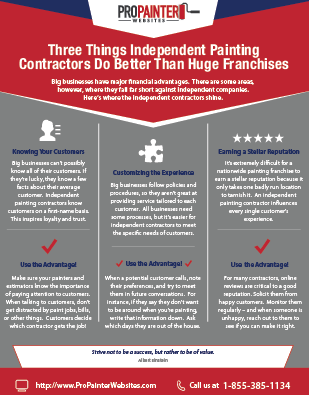Comprehending Seasonal Influences On Commercial Outside Paint: Crucial Understanding For Success
Comprehending Seasonal Influences On Commercial Outside Paint: Crucial Understanding For Success
Blog Article
Short Article By-Aguilar Bagger
When you're intending an industrial outside paint project, seasonal factors can make or break your results. You'll wish to consider exactly how temperature level and moisture impact paint application and drying out times. Choosing the right season can ensure your paint sticks appropriately and lasts much longer. However which great site are truly the very best for this sort of work? Let's discover the key elements that can affect your task's success.
The Effect of Temperature on Paint Application
When you're planning a commercial outside painting task, the temperature level can dramatically affect exactly how well the paint sticks and dries out.
Preferably, you wish to repaint when temperature levels vary between 50 ° F and 85 ° F. If it's also chilly, the paint might not cure properly, causing concerns like peeling off or splitting.
On the other side, if it's as well hot, the paint can dry also rapidly, preventing proper bond and leading to an uneven surface.
You must also think about the time of day; early morning or late afternoon uses cooler temperatures, which can be more positive.
Constantly inspect the maker's recommendations for the certain paint you're making use of, as they typically give assistance on the excellent temperature range for ideal results.
Moisture and Its Result on Drying Times
Temperature level isn't the only environmental factor that influences your industrial outside painting project; humidity plays a significant role too. High humidity levels can reduce drying times significantly, affecting the total quality of your paint task.
When the air is filled with wetness, the paint takes longer to treat, which can lead to concerns like poor attachment and a higher threat of mold development. If you're painting on an especially damp day, be gotten ready for prolonged delay times between layers.
please click the next website to keep track of local climate condition and plan as necessary. Preferably, aim for humidity degrees between 40% and 70% for optimum drying out.
Keeping these factors in mind guarantees your task stays on track and supplies a lasting finish.
Best Seasons for Commercial Outside Paint Projects
What's the best season for your commercial exterior painting projects?
Springtime and very early fall are typically your best choices. Throughout these periods, temperatures are light, and moisture levels are typically reduced, creating excellent conditions for paint application and drying out.
Stay clear of summertime's intense heat, which can cause paint to completely dry as well rapidly, leading to inadequate bond and coating. In a similar way, wintertime's cool temperature levels can prevent correct drying and curing, risking the durability of your paint task.
Go for days with temperature levels in between 50 ° F and 85 ° F for optimum outcomes. Keep in mind to check the local weather prediction for rainfall, as damp problems can wreck your job.
Preparation around these variables guarantees your painting task runs smoothly and lasts longer.
Conclusion
Finally, planning your industrial outside paint jobs around seasonal considerations can make a considerable difference in the end result. By scheduling job during the suitable temperature levels and moisture levels, you'll make sure much better attachment and drying out times. Remember to watch on neighborhood weather report and pick the correct time of year-- spring and early loss are your best choices. Taking these steps will aid you accomplish a long lasting and professional coating that lasts.
